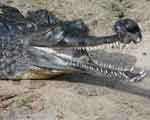Book a live interview

To book a live or taped interview with Peter Weyand in the SMU News Broadcast Studio call SMU News at 214-768-7650 or email news@smu.edu. |
Related links
- Peter Weyand
- Journal of Applied Physiology: “The biological limits to running speed are imposed from the ground up”
- Annette Caldwell Simmons School of Education & Human Development
More SMU Research news
Australia’s The Telegraph newspaper quotes SMU’s Peter Weyand, an expert in human locomotion, in an Aug. 11 article “The Pistorius problem – how South African blade runner’s artificial legs make him 10 seconds quicker”
The Telegraph article examines the controversy surrounding double-amputee sprinter Oscar Pistorius and his qualification for the 2012 London Olympics. What if the 24-year-old South African — the world’s only sprinter with no legs — comes out a winner? Will their be an outcry against Pistorius controversial carbon-fiber prosthetic legs that attach just below his knees?
Weyand is widely quoted in the press for his expertise on human speed. He led a team of scientists who are experts in biomechanics and physiology in conducting experiments on Oscar Pistorius and the mechanics of his racing ability. Pistorius has made headlines worldwide trying to qualify for races against runners with intact limbs, including the Olympics.
Weyand is an SMU associate professor of applied physiology and biomechanics in the Annette Caldwell Simmons School of Education & Human Development.
EXCERPT:
By Mike Hurst
The Telegraph
When it comes to Blade Runner Oscar Pistorius, the athletics world remains split — science isn’t so indecisive.Oscar Pistorius, that running paradox — a sprinter without legs — advanced one more step towards fulfilling his dream of competing in the Olympic Games when he was named in South Africa’s 26-member team this week to compete later this month at the world athletics championships in Daegu, South Korea.
His official notification comes after he clocked 400m in 45.07sec last month in Italy to better the International Association of Athletics Federations’ tough qualifying standard of 45.25sec — a time no Australian has recorded this year.
In fact, at the previous world champs two years ago in Berlin, Trinidad’s Renny Quow won the bronze medal with 45.02. In a quiet season for the men’s 400m if Pistorius could replicate his 45.07 in consecutive rounds he could well end up on the medals podium.
But then what? Will there be an outcry from those able-bodied sprinters who could not run fast enough to beat Pistorius? Will they campaign to the IAAF against the Pistorius appliances — the carbon-fibre J-shaped blades he wears in place of his legs which were amputated below the knee before his first birthday?
What might the IAAF, the custodians of the major Olympic sport of track and field, do next? Would they dare try again to ban him from competing in London next year?
The IAAF have tried once and failed to ban the technology that enables Pistorius to engage in his flight of fancy to run in the Olympics.
Pistorius took the IAAF to the Court of Arbitration for Sport in 2008. His lawyers cited the opinion of seven scientists (6 American and one French) that the evidentiary basis of the IAAF eligibility ban was not sound. The CAS primarily considered the research conducted on behalf of the IAAF by Professor Peter Bruggemann of Cologne sports university which was used to provide the rationale for the IAAF’s eligibility ban.
In fact both scientific parties found that Pistorius enjoys a big advantage over athletes with biological legs but crucially, in its own narrow terms of reference for the case, CAS questioned whether Prof Bruggemann’s findings adequately supported the IAAF claims and the eligibility ban.
The CAS ruled that the evidence the IAAF offered did not adequately support the eligibility ban on Pistorius and overturned it.
The IAAF could well have restated their case against Pistorius but with public opinion, including the support of many of his fellow sprinters, strongly in favour of the courageous and persistent Paralympian they decided not to go on with the matter.
The IAAF’s decision was at least partly taken in the belief that biology would settle the matter and Pistorius might not attain the tough selection time in the first place.
Two of the physiology professors whose research was sought by Pistorius’s legal team, Peter Weyand and Matthew Bundle, told The Daily Telegraph by email yesterday: “We both admire the inspiring performances of Oscar Pistorius.
“We greatly respect the dedication and persistence he has exhibited in his successful quest to qualify for the World Track and Field Championships and congratulate him on his historic accomplishment.
SMU is a nationally ranked private university in Dallas founded 100 years ago. Today, SMU enrolls nearly 11,000 students who benefit from the academic opportunities and international reach of seven degree-granting schools. For more information see www.smu.edu.
SMU has an uplink facility located on campus for live TV, radio, or online interviews. To speak with an SMU expert or book an SMU guest in the studio, call SMU News & Communications at 214-768-7650.

By Margaret Allen
Senior research writer, SMU Public Affairs
View Archive →
 Australia’s The Telegraph newspaper quotes SMU’s
Australia’s The Telegraph newspaper quotes SMU’s 






